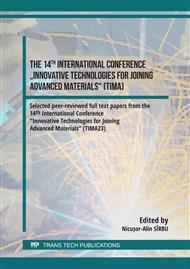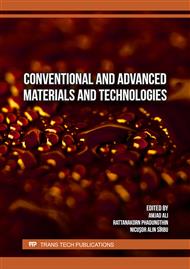p.3
p.13
p.21
p.35
p.43
p.49
p.63
p.73
Research on the Cavitation Resistance Testing of Friction Stir Welded Joint of Cu99 Cooper
Abstract:
In many different industries, cavitation-induced erosion and damage to engineering parts have been a major problem. This is especially true when it comes to fluid systems. Modern materials and welding methods are always being researched to improve the components' resistance to cavitation damage as a way to address this problem. This study examines the cavitation resistance of friction stir welded joints made of high-purity copper alloy Cu99, which has promising mechanical qualities. The project entails the creation of friction stir welded joints made of Cu99 copper, followed by extensive testing to see how well they resist erosion caused by cavitation. A cavitation testing device is used for the testing, simulating the circumstances that can cause cavitation damage to fluid systems in the actual world. The cavitation intensity, exposure time, and temperature changes are the relevant parameters. The performance and longevity of the friction stir welded joints under cavitation conditions are assessed using the experimental results. Investigations are conducted into the effect of post-weld heat treatment, grain boundary features, and microstructural changes in improving cavitation resistance. The goal of the study is to offer important new information on friction stir welding's potential as a method for raising the cavitation resistance of Cu99 copper components.
Info:
Periodical:
Pages:
13-19
Citation:
Online since:
November 2024
Keywords:
Price:
Сopyright:
© 2024 Trans Tech Publications Ltd. All Rights Reserved
Share:
Citation:



